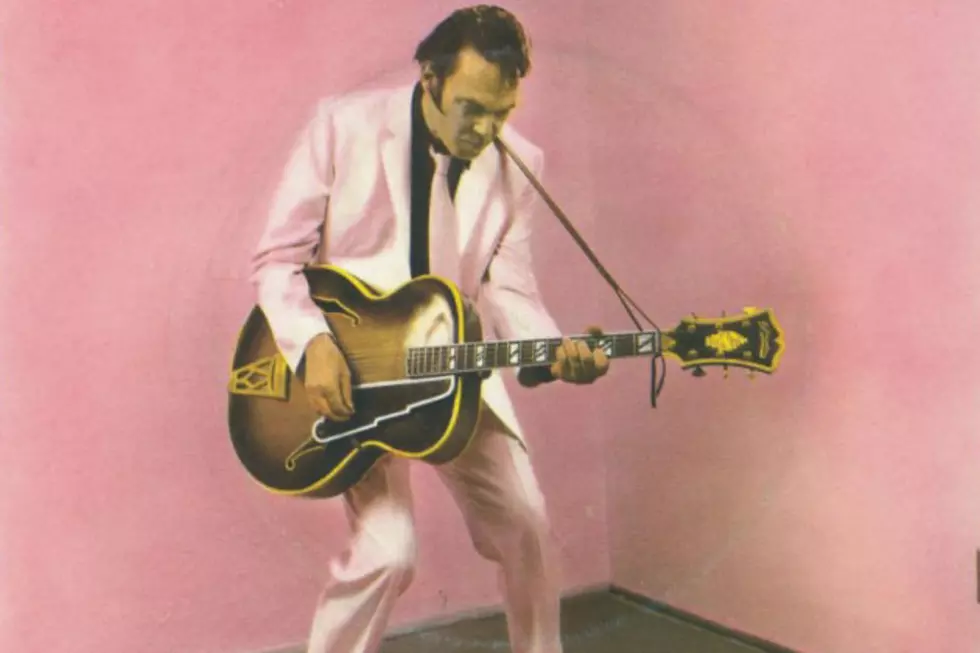
In Defense of … the Rolling Stones’ ‘Their Satanic Majesties Request’
Throughout their long career as a band, the Rolling Stones have been able to shift gears and move from one style to another. Maybe not as effortlessly as the Beatles, but they transcended their original sound in so many interesting ways over the decades. From raw blues to gentle ballads to foot-stomping beat pop, songs like 'Little Red Rooster,' 'As Tears Go By' and 'Get Off My Cloud' are all distinctly different, but all distinctly Rolling Stones at the same time.
By 1966, the band had made great leaps and bounds in its stylistic evolution. Songs like 'Lady Jane,' and 'Paint It, Black' employed distinct instrumentation and production styles, and though 'Paint It, Black' featured Brian Jones on sitar, it was a more textural than central touch. With their 1967 single 'We Love You,' the Rolling Stones turned toward the high tide of psychedelic waters, and with the release of 'Their Satanic Majesties Request' in December of that year, they plunged into that pool head first -- an act that many of their longtime fans have never forgiven them for.
Over the years, the Stones have been taken to task by fans and critics alike for 'Their Satanic Majesties Request,' an album often referred to as a cash-in reaction to the Beatles' 'Sgt. Pepper's Lonely Hearts Club Band,' a psychedelic sell-out and, in general, a bad fit for the down-and-dirty Stones. The singles released from the album, 'In Another Land' and 'She's a Rainbow,' did little to no action on the pop charts at home or abroad: 'Rainbow' briefly showed up in the Top 40, and 'In Another Land,' credited to only bassist Bill Wyman, barely dented the Top 100 in the U.S.; neither single charted in the U.K.
Perhaps their timing was a bit off. The glorious sunshine glow of 'She's a Rainbow' would have made the perfect soundtrack for the Summer of Love ... or maybe the ragamuffin Rolling Stones basking in a lysergic haze was just never meant to fly that far. But despite all the bashing, we can proudly state that 'Their Satanic Majesties Request' is an unabashed psychedelic classic.
From the opening track, 'Sing This All Together,' it's clear that we're off on a very special trip indeed. With its almost surreal campfire mood, the song serves as a perfect opening to the voyage. Just as it fades off, the pure rock 'n' roll stomp of 'Citadel' kicks in. It's one of the great lost Stones songs, full-on rock 'n' roll with an acidic coating that evokes danger, dreams and drama -- all accompanied by a killer guitar riff.
Next is 'In Another Land,' one of the most overtly trippy songs on the album, with phased vocals and harpsichord driving the verses. To paraphrase an ad for the period movie 'Psych Out,' you can practically "taste a moment of madness and listen to the sound of purple." Mick Jagger joins Wyman on the chorus, temporarily bringing it back down to earth. And yes, in a way, it sounds like the Stones doing Donovan, but is that a bad thing? It's three minutes of psych-pop glory. End of story.
'2000 Man' is another highlight of the album that is both prophetic in its lyric and truly engaging musically. The ragged folk mood of the verse is offset by the organ-driven rock and soul groove of the chorus. Keith Richards' guitar is both inviting and dangerous. (The song was covered, quite awesomely, by Kiss on their 1979 album 'Dynasty.') It's at this point, however, that the album suffers its one (and, yes, only) misstep: Side one's closer, 'Sing This All Together (See What Happens),' sounds like a bad trip with no direction home. Apparently not very adept at improvisation, the Stones sound lost here as the song goes nowhere fast.
But flip over to side two, and things are back on track with 'She's a Rainbow,' one of the most wonderful artifacts of the era -- from the glistening piano and punchy horns to the lush but never overbearing strings and the solid rhythm section of Wyman and Charlie Watts. It's radiant psychedelic pop in a little more than three minutes that still sines bright four-plus decades later. In short, a perfect pop record.
'Gomper' is full-on heady psych with tribal percussion, woodwinds, droning guitars and organ. A very ethereal mood is created here. But for many fans, this off-center approach was simply too far removed from what their idea of the Rollings Stones were at the time. At its core, it's a simple folk song, but it just happened to be dosed along the way. With 'The Lantern,' things are a bit more grounded as Jagger gives one of his finest vocal performances on the album. Driven by acoustic guitar and piano, 'The Lantern' is actually a slight glimpse of what would come with their next album: Strip away any air of psychedelia, and you have a song that would nestle in fairly comfortably on 'Beggars Banquet.'
Next up is '2000 Light Years From Home,' a highlight of the record, even for people who don't like 'Their Satanic Majesties Request.' It's one of the Stones' greatest recordings, built around a haunting mood and an unbeatable rhythm that drives the song from Earth to the planets above and back again. Very traditional in its arrangement, '2000 Light Years From Home' is a straightforward rock 'n' roll track. The decorative Moog synthesizers and mellotrons never get in the way; they only add dimension and dementia to the song. The roots of space rock? Perhaps, but as for psychedelic Stones, this is the pinnacle.
The album closes with the kitschy and celebratory 'On With the Show,' which recalls the Stones' previous record, 'Between the Buttons.' It's never quite submerged by the psychedelia; instead it mixes it in with an almost old-timey sound. It's a somewhat odd ending to the trip and, therefore, a perfect fit.
The album was originally issued in a gatefold sleeve complete with a 3D cover shot of the band decked out in high 1967 fashion. Hidden among the grandiose staging are the faces of the individual Beatles, a nod perhaps to the doll on the cover of 'Sgt. Pepper's' that's wearing a shirt that says, "Welcome the Rolling Stones. Good Guys."
Say what you will about the Stones' exile on acid street, but time has actually served the album quite well. Some of the trappings and sounds may come off somewhat dated, while others might seem out of place for the band. But as a stylistic adventure of the era, it flows smoothly and actually holds its own against many other records from the period. Right around the corner were 'Jumpin' Jack Flash,' 'Beggars Banquet' and the template for what would become the definitive phase of the Rolling Stones. And as lauded as that period is, there's something about the technicolor landscape of 'Their Satanic Majesties Request' that needed to be exhibited before the Stones stripped down got back to the roots. And we proudly celebrate it.
More From Diffuser.fm









